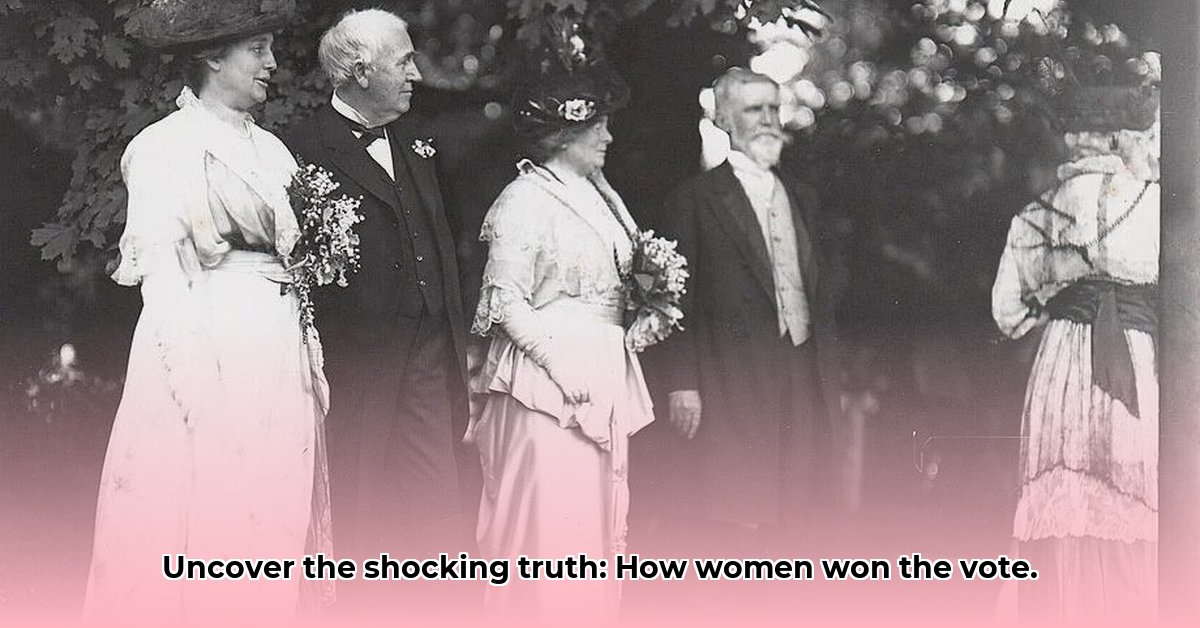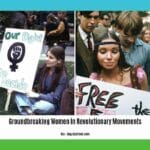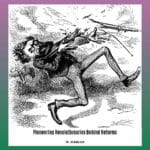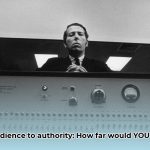Interested in how women secured the right to vote? It wasn’t just polite requests. The Suffragettes employed daring—sometimes shocking—tactics to demand change. This article delves into their strategies, from protests to imprisonment, analyzing what truly propelled their fight for equality. We’ll examine successes, failures, and unexpected alliances. Prepare for a compelling look at a pivotal moment where ordinary individuals sparked extraordinary change.
The Suffragettes: The Militant Tactics Used to Win the Vote for Women
Envision a world without women’s suffrage. This was the reality in early 20th-century Britain. A determined group, the suffragettes, refused to accept it. They fought fiercely, employing methods considered radical, to win the right to vote. Their story embodies courage, strategy, and a willingness to challenge norms, reshaping the landscape of the women’s suffrage movement.
From Polite Appeals to Powerful Protests: Catalyzing Social Change
Initially, the suffragettes pursued peaceful means, petitioning and delivering speeches to advocate for their right to vote. They organized marches and rallies, aiming to persuade the government. However, their pleas were ignored by a government predominantly composed of men. This inaction prompted the suffragettes to reassess their strategy, leading to suffragette civil disobedience. Recognizing that polite requests were ineffective, they sought bolder methods to achieve political empowerment.
This led to more forceful tactics – what we now term “civil disobedience.” They strategically disrupted the status quo, blocking streets and chaining themselves to government buildings. These carefully orchestrated events aimed to capture media and public attention. Their goal: to make their cause impossible to ignore, demonstrating suffragette activism.
Hunger Strikes: A Dramatic Stand Against Societal Norms
A potent tactic employed by the suffragettes was the hunger strike. They understood the impact of frail, imprisoned women weakened by hunger. Refusing to eat while incarcerated, they highlighted their dedication. The government’s response – force-feeding – further galvanized public support and underscored suffragette resilience. Force-feeding became a symbol of oppression and the government’s unwillingness to compromise.
The suffragettes understood the importance of public opinion. They aimed to win public support, considering it vital for achieving their goal, and ultimately leading to suffragette legacy.
The Unexpected Ally: Leveraging Media Coverage for Social Impact
The suffragettes grasped the power of publicity. They actively sought media attention – newspapers and films – as allies in amplifying voices for gender equality. They cleverly used the media to shape public perception and build support for their cause. This strategic media engagement proved vital in the suffragette campaign. Christabel Pankhurst, a prominent figure in the movement, emphasized the importance of “making news” to advance their cause.
Internal Conflicts and Evolving Perspectives in Suffrage Movement
The suffragette movement wasn’t monolithic. Disagreements existed regarding the use of radical tactics, with some members fearing alienation of potential supporters, while others saw these actions as essential to force government action regarding suffragette strategies. This internal tension highlights the complexities of social movements.
Historians increasingly recognize the limited inclusion of women of color, due to racial dynamics that often overlooked the struggles of women from diverse backgrounds. Prominent figures like Ida B. Wells actively challenged this exclusion. This reminds us that progress, even in progressive movements, can be imperfect, underscoring the importance of intersectional feminism.
A Legacy of Courage and Action: Inspiring Future Generations
The suffragettes’ legacy extends beyond achieving women’s suffrage. Their strategies, perseverance, and disagreements serve as examples for activists today. They demonstrated that progress requires courage, determination, and a willingness to use every tool to achieve justice. Their fight continues to inspire global efforts to challenge injustice, highlighting their impact on modern activism.
| Stakeholder | Short-Term Effects | Long-Term Effects |
|---|---|---|
| Suffragette Activists | Increased public awareness, government pressure, heightened sense of solidarity | Continued activism for equality and social justice, expanded political opportunities for women |
| British Government | Public pressure leading to reforms and concessions, political instability | Broader societal changes, including greater political representation for women, legal reforms |
| Public Opinion | Mixed public reaction, heightened awareness of the issue, polarized viewpoints | Evolving attitudes toward women’s roles and societal equality, cultural shifts |
| Historians & Scholars | Ongoing research into the movement’s methods and impact, archival analysis | Continued study and reinterpretation of the Suffragette movement’s effects on society |
Historians continue to research and re-examine this crucial period to gain deeper understandings of the suffragettes’ methods, motivations, and lasting effects. Their fight reminds us that even small actions can have powerful consequences and inspires us to never give up hope for a more just future.
How did racial dynamics affect strategies in the US women’s suffrage movement?
The fight for women’s suffrage was a complex movement marked by cooperation and conflict, especially regarding racial inequality in suffrage. A crucial aspect of this struggle was the impact of race on strategies and tactics employed by women fighting for the vote.
A Divided Movement and the Quest for Inclusivity
Early suffrage activism often focused on polite lobbying, subtly reinforcing existing power structures. It prioritized alliances with powerful white women, often marginalizing Black women activists, creating a struggle for suffrage movement inclusivity. Many white suffragists, fearful of alienating white male voters, downplayed racial inequality.
Black women were active participants from the start, often facing greater obstacles. They fought for voting rights alongside their white sisters, advocating for intersectional approaches. However, their voices were often silenced within predominantly white organizations, highlighting the Black women’s suffrage struggle. Prominent figures like Mary Church Terrell and Nannie Helen Burroughs championed the rights of Black women within the movement.
Strategies, Setbacks, and the Fight for Equal Representation
The movement’s evolution from peaceful appeals to more militant tactics was influenced by societal racial views. The ability to garner widespread support depended on presenting a carefully crafted image of “pure” womanhood, often excluding Black women and their experiences, thus hindering minority voices in suffrage.
How did racial dynamics affect strategies in the US women’s suffrage movement? While some white suffragists attempted interracial alliances, ingrained racism often resulted in exclusion or tokenization of Black women. This created internal divisions and weakened the movement’s effectiveness. Black women often formed their own suffrage organizations, such as the National Association of Colored Women (NACW), to address their specific concerns.
Victory and the Ongoing Fight for Racial Justice
The success of the suffrage movement can’t be separated from the ongoing fight against racial injustice. Even as women gained the right to vote, racial inequality continued to impede their full participation. The story of women’s suffrage is also a testament to the ongoing need to confront the complexities of race, gender, and power in the pursuit of social justice, highlighting the ongoing legacy of suffrage struggles. The Voting Rights Act of 1965 was a crucial step in ensuring that all women, regardless of race, could exercise their right to vote.
Key Takeaways:
- The women’s suffrage movement was not racially homogenous; it saw a complex interplay of cooperation and conflict along racial lines.
- Early strategies often prioritized alliances with powerful white women, sometimes marginalizing Black women activists.
- Black women were active participants, but often faced greater obstacles due to racism and sexism.
- The movement’s reliance on a specific image of “pure womanhood” often excluded Black women and their experiences.
- The ongoing struggle for racial equality deeply impacted the strategies and effectiveness of the suffrage movement.
- The success of the suffrage movement was intertwined with the broader fight against racial injustice.
Suffragette Tactics and International Comparisons
Key Takeaways:
- Early suffrage movements relied on peaceful methods like petitions and lobbying.
- Frustration with slow progress led to the adoption of more militant Suffragette Tactics.
- International Comparisons reveal a transatlantic exchange of ideas and strategies. American suffragists learned from their British counterparts to promote global suffrage movement.
- Militant actions, while controversial, significantly increased media attention and public awareness.
- The effectiveness and morality of militant strategies are still debated by historians today.
The Peaceful Beginnings: Petitions and Parades as Paths to Change
The fight for women’s suffrage began with peaceful strategies: petitions, speeches, and organized marches. Both the US and UK initially followed this approach. Women presented their case politely, believing in the power of reasoned argument. This passive approach highlights the struggle for peaceful suffrage advocacy.
A Transatlantic Shift: Embracing Militancy for Social Change
Patience wore thin, fueling a change in tactics. The British Women’s Social and Political Union (WSPU), led by Emmeline Pankhurst, spearheaded this transformation. Their actions—window smashing, hunger strikes, and even arson—shocked the world and transformed suffragette protest tactics. These bold Suffragette Tactics quickly became news.
American suffragists, notably Alice Paul, witnessed the WSPU’s impact and adapted similar Suffragette Tactics, drawing inspiration from international feminist movements. International Comparisons highlight this exchange of ideas. The transatlantic dialogue fundamentally altered the course of the movement.
The Power of Publicity: Media and Public Opinion
One undeniable effect of militancy: increased media coverage promoting suffrage movement publicity. The dramatic actions grabbed headlines and sparked debate. Some argue it radicalized public opinion, while others maintain it forced governments to act.
The Moral Debate: Ethical Considerations of Militancy
Was the violence, even if directed at property, ethically justifiable? Historians continue to grapple with the ethics of suffragette militancy. The damage to property was real, and the arrests and imprisonment were harsh. Yet, proponents argue that such actions were necessary to overcome resistance to women’s rights.
Diverse Strategies and Unexpected Allies
The fight wasn’t monolithic. Different strategies existed within both the American and British movements. Ida B. Wells-Barnett’s activism intersected suffrage with racial justice, enriching the movement’s complexity, highlighting the need for inclusive suffrage movements. The Women’s Freedom League, led by Charlotte Despard, focused on a wider range of issues, including violence against women and unequal pay.
Lasting Impact: Suffrage Achieved, Debates Continue
Both the US and UK eventually granted women the right to vote, a victory for global women’s rights. The timelines differed, and the paths diverged, but the ultimate success was shared. This success, however, doesn’t conclude the debate surrounding the Suffragette Tactics employed. The effectiveness and ethics of the more militant approaches continue to be discussed and analyzed. The legacy of the Suffragette movement remains rich and complex.
How U.S. Suffragists Adopted UK Suffragettes’ Militant Tactics
The Role of Media in the Suffrage Movement
Key Takeaways:
- Media’s portrayal of the Suffragettes was a double-edged sword, simultaneously raising awareness and hindering progress through conflicting narratives.
- Newspapers, pamphlets, and later radio broadcasts were strategically used to advance the cause of women’s suffrage.
- The depiction of Suffragettes ranged from heroic activists to disruptive radicals, often fueled by negative stereotypes and the media portrayal of suffragettes.
- Militant tactics, while generating publicity, also alienated potential allies and strengthened opposition.
- The evolving media landscape—from print to radio and beyond—significantly impacted public perception.
A Mixed Legacy: Newspapers and Public Opinion Formation
The press shaped perceptions of the Suffragette movement, thereby defining suffrage movement narratives. Some publications championed women’s rights, providing crucial platforms. Others sensationalized militant actions, depicting Suffragettes as extremists. This created a narrative battleground.
Playing the Media Game: Strategic Communication in the Suffrage Movement
The Suffragettes themselves understood the role of media in the suffrage movement. They actively engaged, utilizing various media to promote their cause. They crafted press releases, organized public events designed for media coverage, and even directly engaged with journalists. Sylvia Pankhurst, for example, established her own newspaper, “The Women’s Dreadnought,” to disseminate the movement’s message.
The Power of the Image: Stereotypes and Propaganda Dissemination
Newspapers frequently employed negative stereotypes, portraying Suffragettes as neglecting their families or posing a threat to national stability. These images played a powerful role in shaping public opinion, highlighting the impact of propaganda in suffrage. Political cartoons often depicted suffragettes as masculine or hysterical.
The Rise of Radio: A New Voice for Women’s Rights
The advent of radio broadcasting in the early 20th century offered a new dimension to the role of media in the suffrage movement. It allowed for a more direct and personal connection with the public, humanizing Suffragettes and conveying their message in a more nuanced way, demonstrating the impact of radio in suffrage advocacy.
Analyzing the Impacts: Short-Term and Long-Term Effects
The impact of media on public opinion was complex and varied over time. Short-term effects often involved immediate shifts in public sentiment, fueled by sensationalized stories or powerful images. However, the long-term impact was defined by the cumulative effect of repeated exposure to both positive and negative portrayals. This created a lasting legacy, shaping future discussions about women’s rights and social change.
- Discover the best books on ancient Roman history: Expert recommendations for all levels - August 6, 2025
- Why is the Sky Blue? The Simple Answer: Atmospheric Optics Revealed - August 6, 2025
- Unlock Ancient History Books: New Discoveries, 2025 - August 6, 2025
















